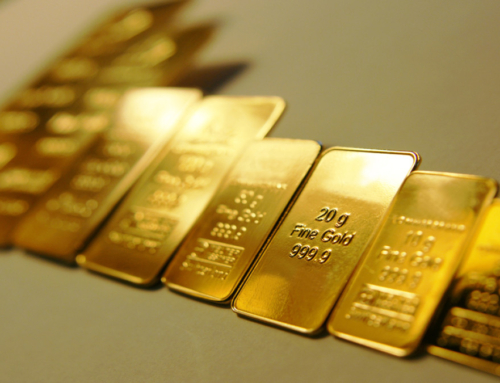There’s been some interesting comparisons to the current stock market with 2008, 1987 and 1929 in recent days, so I thought I’d look at the charts myself and see what’s going on.
First, I should mention a post I put up a couple weeks ago before my vacation to Sicily where I took a look at the Dollar vs. Gold.
I wrongly concluded that Gold looked interesting, and it subsequently crashed as the Dollar continued higher.
Dollar strength is typically not good for gold prices.
So, with that out of the way, there has been very interesting activity in the Treasury market over the last couple of weeks, as Treasury yields at the long end of the yield curve have surged higher.
One explanation is that there is a global shortage of Dollars, and this is forcing foreign entities to sell their Treasury holdings in order to buy dollars.
I am not sure I completely buy that. The Dollar has rallied in recent weeks, but it is still well below its 2022 highs.
With that said, the sell-off in the 10 Year Note and 30 Year Bond is concerning.
Why?
Because we’ve seen this movie before… 1929 and 1987.
In both cases, the stock market was holding up reasonably well as yields were rising. And then, there was a spike in the yields like we’ve seen in the last weeks, and that caused a crash in the stock market.
Let’s have a look at some charts.
First, have a look at this long term chart of 30 Year Bond yields going back to the early 1980’s.
Note the rapid rise in yields after they hit a bottom in 1986.
This is the 1986-1987 chart of the 30 Year Bond futures. The Tbond was in a bear market, but prices started to accelerate to the downside in August (yields move up as prices move down), paused, and re-accelerated in October heading into the October 19 crash in the stock market.
Here’s the 30 Year Bond in 2022-2023. The Tbond has been in a bear market for two years, but there has been a re-acceleration to the downside that started in early August, and picked up steam again in the last two weeks.
Now, let’s look at some stock market charts.
First up, let’s have a look at the 1929 and 1987 crashes.
In 1987, renowned hedge fund manager Paul Tudor Jones II made a ton of money shorting the stock market because he sniffed out the similarities to 1929.
This is the chart of the Dow Industrials in 1929. You can see that the market actually peaked in early September. When it broke through that early October low, the dam broke.
This is the 1987 chart of the Dow Industrials. The market peaked in late August, and then when it broke that September low, the dam broke.
Now, the only stock market averages that look anything like these first two charts are the Nasdaq Composite and Nasdaq 100.
This is the chart of the Nasdaq 100 futures. This is where all the action has been this year, due to the AI craze. Most of the gains have been driven by a handful of stocks with Nvidia and Meta leading the way.
So far, after breaking the August low, the Nasdaq 100 has yet to crash.
However, look at the Russell 2000, which is more reflective of what is going on in the rest of the economy.
The Russell 2000 actually peaked in 2021. Since June 2022, after a nasty bear market, it has been range bound.
However, with the re-acceleration of Treasury yields to the upside, the Russell 2000 has been selling off and is only about 6% above its 2022 lows.
For the Russell 2000, this could be a repeat of 2008.
The Russell 2000 hit its peak in summer 2007, and then endured a choppy bear market with a bottom in January 2008.
It then traded within a range for eight months until the damn burst a couple weeks after the Lehman Brothers bankruptcy.
Final Thoughts
On a global basis, the economy looks weak. Germany is enduring a sharp recession, and China has still not recovered from its own mess.
What really makes me think there are issues is the crash we are seeing in gas prices.
OPEC has been trying to prop up oil prices with cuts to production since the summer. This caused a rise in oil prices from under $70 to over $90 per barrel.
However, in spite of a recent surge higher in oil prices, gas prices have been selling off on weak demand.
This weak demand stems from a weak global economy.
With all that said, there will likely need to be a catalyst of some sort to cause a crash in the stock market. Another large bank going under, or perhaps a hedge fund.
Otherwise, I suspect we’ll continue to grind a bit lower, with the same scenario unfolding as we’ve seen so far this year… good earnings reports out of some AI related companies will push their stock prices higher, while the rest of the market trends lower.










Leave A Comment